Picking up the pieces after twin cyclones hit Vanuatu
Two Category 4 cyclones hit Vanuatu — one of the world’s most disaster-prone countries — within 72 hours in early March.
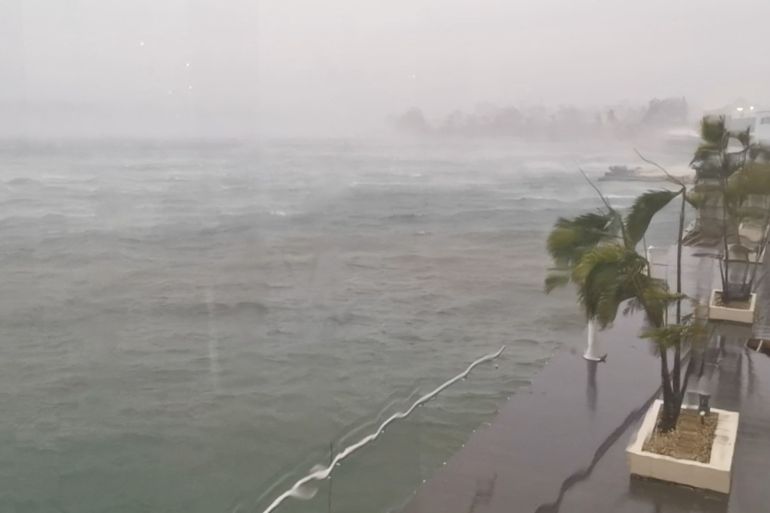
Port Vila, Vanuatu – Vanuatu is one of the most disaster-prone countries in the world and it is regularly affected by cyclones during the wet season from November to April.
But few in this archipelago nation of more than 80 islands were prepared for two Category 4 cyclones hitting the country within 72 hours in early March.
Keep reading
list of 4 itemsTsunami warning withdrawn after powerful earthquake hits Vanuatu
EU halts Vanuatu visa-free access over ‘golden passports’ scheme
Tropical Cyclone Judy hits Vanuatu, with another on its way
“The cyclone kept changing direction and the winds were coming from different directions,” said Cathy Hivo, recounting the fearful hours as the second of the two cyclones churned across Port Vila, Vanuatu’s capital, on March 3.
“The roofing iron on the house next door tore off and hit one of our windows,” she told Al Jazeera.
Cyclone Judy had just passed over the archipelago on March 1 when Cathy and her husband Ken endured the second bout of extreme weather, battened down inside their home for more than six hours as the strong winds and driving rain of Cyclone Kevin raged from late afternoon until about 11pm.
“It got stronger and stronger,” said Ken Hivo, who is the chief of the Freswota settlements in Port Vila.
“We were told it was a Category 3 cyclone, but it then became Category 4. We have been experiencing stronger cyclones, so we knew what to do,” he said, recounting methods to secure windows and roofs so they do not get ripped off by cyclones.
Not everyone was so fortunate. Many homes could not withstand the cyclonic winds and lost their roofs and walls. Some structures collapsed entirely.
“Thankfully, no lives were lost,” Chief Hivo said, adding that many had lost their homes or sustained storm damage.
While post-cyclone recovery for people in Port Vila will take time, it will be counted in years for the less fortunate residents of the city’s informal settlements like Freswota.
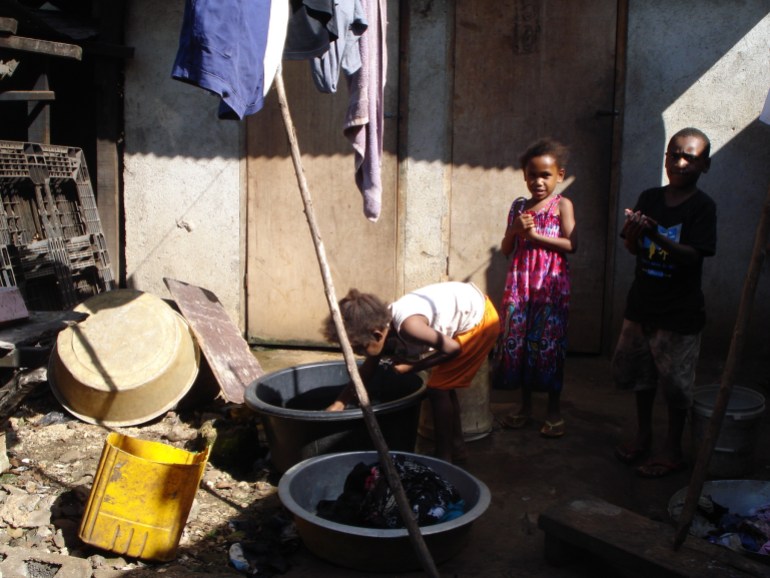
‘Swept out to Sea’
It takes a ride in a local minibus to reach the sprawling Freswota settlements that are home to more than 12,000 people on the outskirts of Port Vila, and Freswota is just one of more than 20 informal settlements on the outskirts of the capital.
Visiting on a recent morning, the area’s unpaved streets had turned to mud after a heavy downpour of rain.
The rapid growth of informal settlements in Pacific Island cities such as Port Vila has been driven by Islanders drawn to the prospect of jobs and better access to education and public services in capitals and major towns. For decades, the growth of settlements in Vanuatu and other island nations has outpaced the capacities of their governments to respond with urban planning, infrastructure and services.
Settlements have mushroomed — often on flood-prone land where tenure rights are uncertain — and so have unsafe, informal housing and overcrowded living conditions that are particularly vulnerable to the more extreme consequence of climate change.
Residents of Freswota range from those in permanent employment to the jobless, but what they all have in common is their low incomes. The recent pair of cyclones have only added to the residents’ hardships.
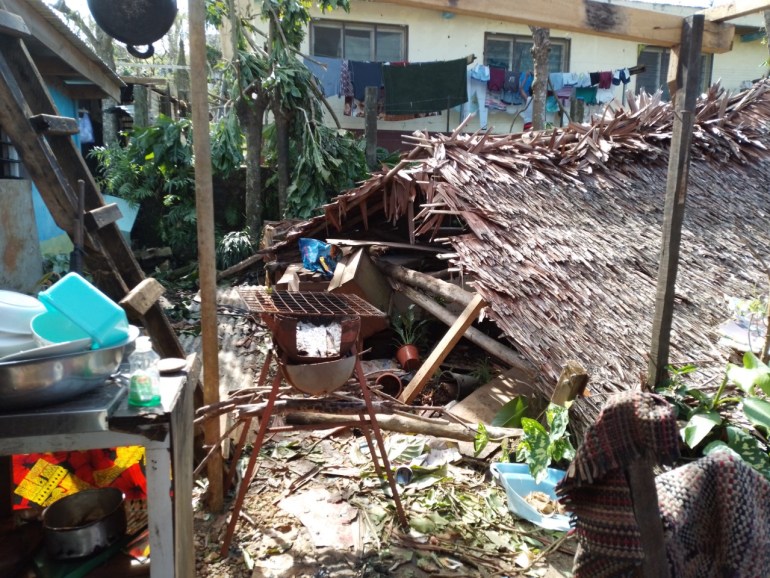
There was no power for a week and a half after Cyclone Kevin, and it is still down in some parts of the community.
“You’re looking at houses that have been damaged and some just totally destroyed”, said Soneel Ram, a Pacific country communications manager for the International Federation of Red Cross and Red Crescent Societies.
“The urgent needs here are shelter and clean, safe drinking water, because most of these communities rely on rivers and streams as their water source, but the debris have polluted these water sources,” Ram told Al Jazeera.
The Red Cross has provided tarpaulin to make temporary shelters, and water and hygiene kits, Ram added.
The morning after Cyclone Kevin hit, Chief Hivo recalled, he met with other community leaders to prepare a recovery plan and to organise residents, including young people, to start the cleanup and assess local needs.
“We depend on our local foods. People usually have market stalls selling fresh produce on the sides of the roads in the settlement. But now there isn’t much food to sell,” he said.
“The most vulnerable people in the settlements when we have a cyclone are the elderly, those in poor health or with medical conditions and people who are without relatives here to support them,” Hivo said.
“But we share everything together, we help each other,” he added.
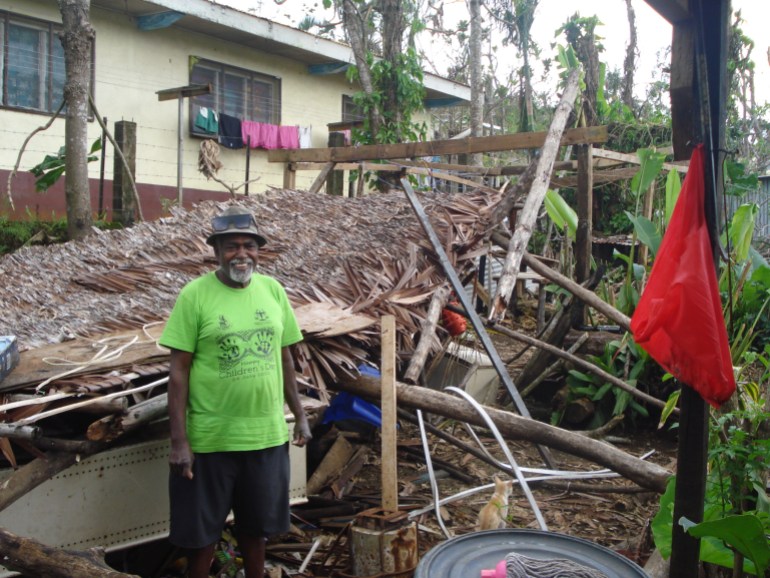
Two cyclones, one earthquake, and a tsunami warning
The severe winds and torrential rain unleashed by the cyclones also destroyed crops and household food gardens throughout the country.
More than 80 percent of Vanuatu’s population of about 320,000 people were affected by the back-to-back cyclones, and Shefa province, which includes the coastal city of Port Vila on Efate Island, was one of the worst-affected areas.
The UN Office for the Coordination of Humanitarian Affairs said there was widespread destruction of homes, buildings, food gardens, as well as water, power and telecommunication services.
While official assessments of the scale of the loss and damage throughout the islands are still being finalised, a spokesperson for Vanuatu’s National Disaster Management Office told Al Jazeera that rebuilding homes could take anywhere from a few months to several years.
Restoration of major infrastructure could take more than three years, according to the NDMO, and the recovery bill is initially estimated at about $50m.
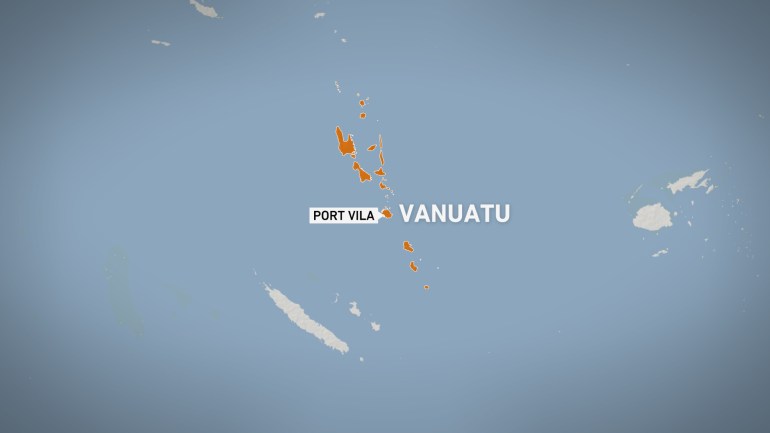
Located in the tropical Pacific, Vanuatu experiences about two to three cyclones per year. Also located within the ‘Pacific Ring of Fire’ of seismic activity, Vanuatu faces a high risk of earthquakes, volcanic eruptions and tsunamis.
And as Cyclone Kevin was wreaking havoc in Port Vila earlier this month, a magnitude 6.5 earthquake shook Vanuatu’s Espiritu Santo island in the north of the archipelago.
For small island developing states, climate change is the single most significant threat to sustainable development. Now, three weeks after the dual natural disasters, the Vanuatu Government is pushing to achieve climate justice at the UN.
Vanuatu hopes the United Nations General Assembly (UNGA) will this week adopt its push for greater priority to be given to the human rights implications of changing climates and for the International Court of Justice to protect vulnerable nations from climate change.
Vanuatu’s Minister of Climate Change, Ralph Regenvanu, reported that 119 governments have cosponsored Vanuatu’s UN resolution, which seeks clarity on the legal obligation of states to tackle climate change action, according to the Reuters news agency.
Vanuatu hopes more nations will sign on to the resolution before the UNGA debate begins this week and a vote on the resolution takes place.
While the post-disaster clean up and restoration in the central business district of Port Vila has paved the way for the resumption of public transport, services and business, it will be a far longer road to recovery for the people living precariously in settlements such as Freswota.
“There are people here who have not recovered from Cyclone Pam,” Chief Hivo said, referring to the cyclone that hit in 2015.
“It will take longer for the most vulnerable people,” he adds.